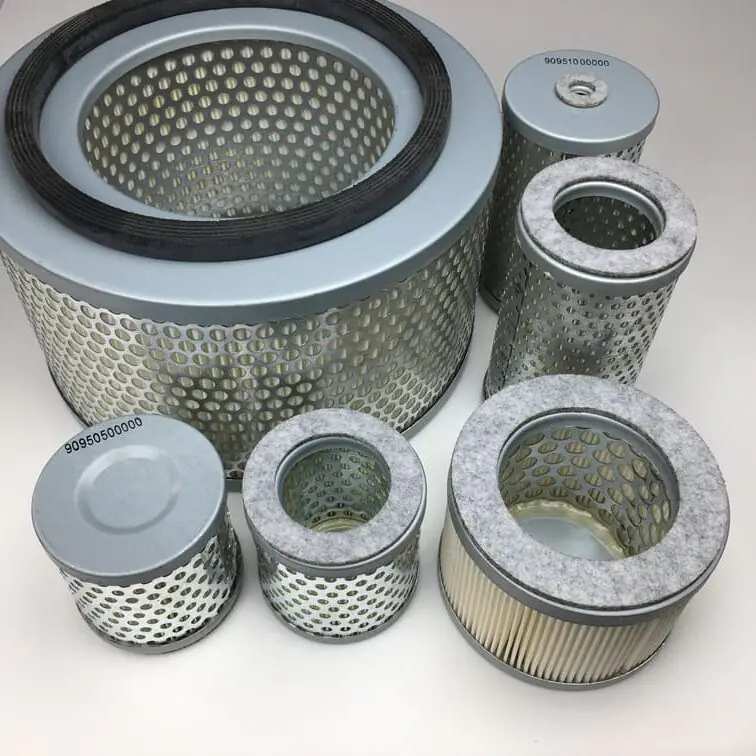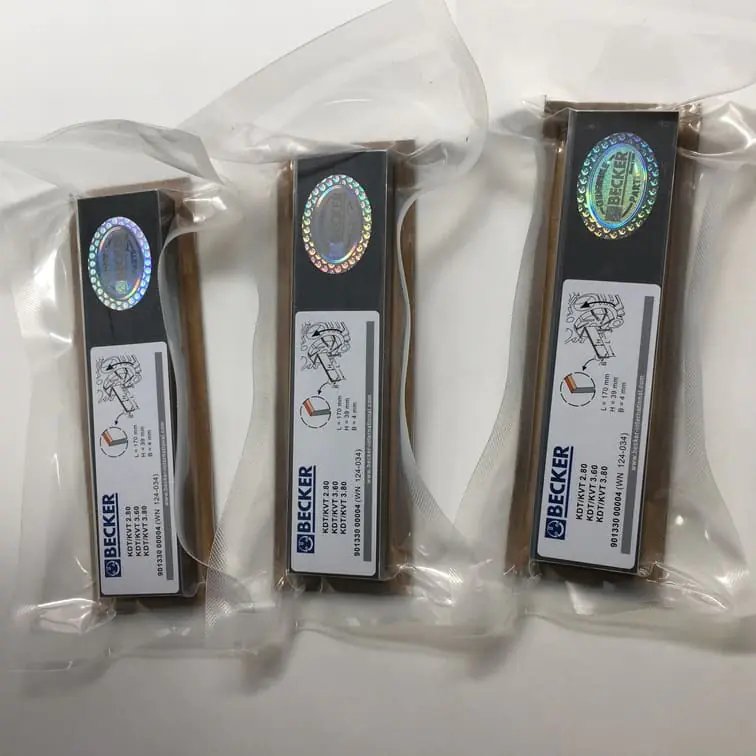What Does the Brake Vacuum Pump Do?
The brake vacuum pump is a crucial component in a vehicle’s braking system, especially in cars with power brakes. It plays a vital role in ensuring smooth braking by maintaining the appropriate vacuum pressure needed to support the brake booster. Understanding the functions and significance of the brake vacuum pump can help vehicle owners diagnose potential issues and maintain their vehicles effectively. In this article, we will explain the brake vacuum pump’s workings, common issues, and the solutions needed to keep your braking system in top condition.
How Does the Brake Vacuum Pump Work?
The brake vacuum pump works by generating the vacuum necessary to assist the brake booster, which amplifies the force exerted by the driver on the brake pedal. This amplification ensures that you can bring your vehicle to a stop with minimal effort. Without the brake vacuum pump, applying brakes would require significantly more physical force, making it cumbersome for the driver.
The Key Components of the Brake Vacuum System
To understand how the brake vacuum pump functions, it helps to know the primary components involved in the system:
| Component | Description |
|---|---|
| Brake Booster | Assists in applying force to the brakes. |
| Brake Vacuum Pump | Provides the necessary vacuum to the booster. |
| Check Valve | Ensures that vacuum pressure is maintained in one direction only. |
| Vacuum Line | Connects the vacuum pump to the brake booster. |
The vacuum pump can be mechanically driven, electric, or belt-driven, depending on the vehicle type. Many modern vehicles employ an electric brake vacuum pump to maintain consistent performance regardless of the engine state.
Types of Brake Vacuum Pumps
1. Mechanical Brake Vacuum Pumps
Mechanical pumps are often driven by the engine camshaft or a similar mechanism. These are widely used in older vehicles and are quite effective as long as the engine is running.
2. Electric Brake Vacuum Pumps
Electric pumps are becoming increasingly popular in modern cars, especially those with hybrid or electric drivetrains. These pumps can generate vacuum independently of the engine, ensuring reliable braking even when the engine isn’t operating.
“The choice between an electric or mechanical brake vacuum pump often depends on the vehicle’s design and efficiency requirements.”
3. Pneumatic Brake Vacuum Pumps
Some vehicles also make use of pneumatic vacuum pumps, particularly in commercial trucks and diesel engines. These systems can generate substantial vacuum pressure, making them ideal for larger vehicles that require more braking force.
| Pump Type | Features | Common Application |
|---|---|---|
| Mechanical | Engine-driven, effective when engine runs | Older vehicles, conventional systems |
| Electric | Independent of engine state | Modern cars, hybrids, electric vehicles |
| Pneumatic | High vacuum capacity | Trucks, heavy-duty vehicles |
The Role of the Brake Booster
The brake booster is essentially the intermediary between the brake pedal and the master cylinder. It relies heavily on vacuum pressure to multiply the force exerted by the driver. When the brake pedal is pressed, the brake booster uses vacuum pressure from the vacuum pump to reduce the force required to stop the vehicle.
- Power Brake Booster: The most common type of booster used in passenger vehicles. It depends on vacuum assistance to make braking efficient.
- Hydro Boosters: Some vehicles utilize hydraulic pressure, especially in systems that do not rely on vacuum assistance.
How Does the Brake Vacuum Pump Assist?
Without the brake vacuum pump, the brake booster would not receive the vacuum pressure it needs. This means that braking would be significantly less efficient and require much greater physical effort from the driver.
“The brake vacuum pump ensures that your power brake system can perform as effectively as possible.”
Common Issues With Brake Vacuum Pumps
1. Air Leaks in the Vacuum Line
A common problem with vacuum pumps is air leaks in the vacuum line. This reduces the efficiency of the braking system and may cause the brake pedal to feel hard or require more effort to press.
How to Detect Air Leaks
- Listen for a Hissing Sound: Air leaks often produce a hissing noise when the brakes are applied.
- Check Engine Light: Some modern vehicles may display a warning if the vacuum level drops below a certain threshold.
2. Worn Out Pump Motor
For electric vacuum pumps, a worn-out motor can mean the pump fails to generate enough vacuum. Symptoms of a failing pump motor include reduced brake efficiency and a longer stopping distance.
3. Faulty Check Valve
The check valve ensures that vacuum pressure does not escape. A faulty check valve can cause vacuum loss, leading to decreased performance from the brake booster.
| Issue | Symptom | Solution |
|---|---|---|
| Air Leak | Hissing sound, hard brake pedal | Inspect and replace the vacuum line |
| Worn Pump Motor | Reduced brake efficiency | Replace or repair the vacuum pump motor |
| Faulty Check Valve | Inconsistent braking, loss of vacuum | Replace the check valve |
Fixing Common Brake Vacuum Pump Issues
Step-by-Step Guide to Fixing a Brake Vacuum Pump
1. Turn Off the Vehicle
Ensure the vehicle is turned off before attempting any repair. Disconnecting the power source is also crucial when dealing with an electric pump.
2. Locate the Brake Vacuum Pump
Typically, the pump is located near the brake booster or on the engine compartment, depending on the vehicle make and model.
3. Inspect the Vacuum Lines
Carefully inspect the vacuum lines for any signs of cracks, wear, or disconnections. Replace the line if any defects are found.
4. Check Electrical Connections (For Electric Pumps)
Inspect the wiring and connections to the electric brake vacuum pump. A loose or damaged connection can prevent the pump from working effectively.
Tools Needed for Repair
- Screwdriver: To open the pump housing.
- Multimeter: For checking electrical connections.
- Replacement Vacuum Line: If the original line shows signs of wear.
| Repair Step | Tools Required |
|---|---|
| Turn Off Vehicle | No tools needed |
| Locate Vacuum Pump | Screwdriver |
| Inspect Vacuum Lines | Utility knife, replacement line |
| Electrical Check | Multimeter |
Preventative Maintenance for Brake Vacuum Pumps
1. Regular Inspection of Vacuum Lines
The vacuum lines should be inspected at least once every few months to ensure there are no leaks or damages. Even minor cracks can reduce the effectiveness of the braking system.
2. Listen for Unusual Sounds
Always listen for any unusual sounds, such as hissing or grinding, when you apply the brakes. These noises are often the first sign that something is wrong with the vacuum system.
3. Replace the Check Valve Periodically
The check valve is a critical component that should be replaced periodically to ensure it maintains the appropriate vacuum pressure within the system.
“Routine maintenance can help prevent major issues and prolong the life of your brake vacuum pump.”
Frequently Asked Questions
1. What is the primary function of the brake vacuum pump?
The brake vacuum pump provides the necessary vacuum pressure to the brake booster, allowing you to apply the brakes with minimal effort. It essentially amplifies the force you exert on the brake pedal.
2. How can I tell if my brake vacuum pump is failing?
Common signs include a hard brake pedal, hissing noise, or increased stopping distance. If the brake pedal feels difficult to press or requires more effort, there could be an issue with the vacuum pump.
3. Can I replace a brake vacuum pump myself?
Yes, if you are familiar with basic vehicle maintenance. However, for safety reasons, it’s best to consult a professional if you are unsure about any step in the process.
4. Is a brake vacuum pump necessary for all vehicles?
Not all vehicles require a brake vacuum pump. Vehicles with power brake systems generally use a vacuum pump, while some older models or specialized systems (like electric cars) may have different mechanisms.
5. What are the symptoms of a faulty check valve?
A faulty check valve can lead to inconsistent braking or loss of vacuum pressure. Symptoms include a spongy brake pedal and erratic braking behavior.
6. How often should I service my brake vacuum pump?
It’s recommended to inspect the brake vacuum pump and associated components every 12 months or as part of your regular vehicle service schedule.
Conclusion
The brake vacuum pump is a small but critical component that ensures your braking system works effectively and efficiently. Whether it’s a mechanical, electric, or pneumatic system, the vacuum pump plays an essential role in providing the vacuum pressure needed for safe braking. Regular maintenance, such as inspecting vacuum lines, listening for unusual noises, and replacing the check valve, can help keep your braking system in good shape. If you notice any signs of brake inefficiency, such as a hard pedal or increased stopping distances, it could be time to check your brake vacuum pump.
For more information on maintaining or replacing components of your vacuum pump, reach out to us or visit our website for the best quality parts.




